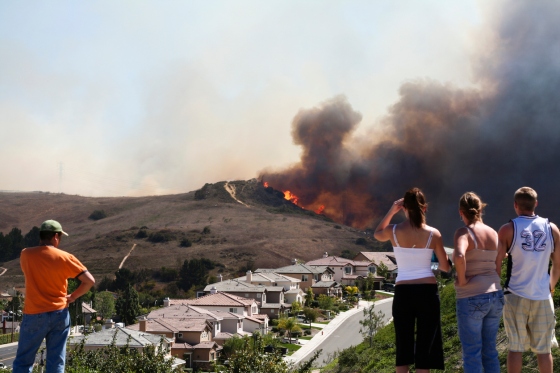If you have workers in a wildfire zone, you need to have measures in place to protect them in the event of a catastrophe.
Smoke from these wildfires is dangerous as it contains chemicals, gases and fine particles that can lodge deep in people’s lungs. This can make it difficult to breathe, aggravate asthma as well as existing heart and lung conditions – not to mention all the coughing and wheezing that most people would experience.
To protect workers exposed to wildfire smoke, Cal/OSHA recommends that employers take the following measures:
- Engineering controls like using a filtered ventilation system in indoor work areas.
- Administrative controls, like limiting the amount of time your employees work outside, if this is possible.
- Provide employees with respiratory protective equipment, such as disposable filtering dust masks.
To filter out fine particles, respirators must be labeled N-95, N-99, N-100, R-95, P-95, P-99 or P-100, and must be labeled in a way that is approved by the US National Institute for Occupational Safety and Health.
- If you have employees working outside in areas that have been designated as “Unhealthy,” “Very Unhealthy,” or “Hazardous,” be sure to provide them with approved respiratory protective equipment.
Make sure workers are wearing respirators properly. Manufacturer 3M has the following tips:
A filtering facepiece respirator without a valve
To perform a user seal check on a non-valved, cup-shaped disposable respirator:
- Completely cover the outside of the respirator with both hands.
- Do not push the respirator against your face.
- With your hands in place on the surface of the respirator, exhale or breathe out sharply.
- If you feel air blowing on your face or eyes, the respirator needs to be adjusted.
- To adjust, repeat the user instructions on how to put on the respirator.
- When the respirator is a good fit, you will not feel any air blowing on your face or eyes.
- If you can’t get a good fit, try a different model.
A filtering facepiece respirator with a valve
To perform a user seal check on a valved, cup-shaped disposable respirator:
- Completely cover the outside of the respirator with both hands.
- Do not push the respirator against your face.
- With your hands in place on the surface of the respirator, inhale or breathe in sharply. The respirator should collapse slightly.
- If air leaks between the face and the face-seal of the respirator, the respirator needs to be adjusted. To adjust, repeat the user instructions on how to put on the respirator.
- When the respirator is a good fit, you will not feel any air leaking between the face and the face-seal.
- If you can’t get a good fit, try a different model.











